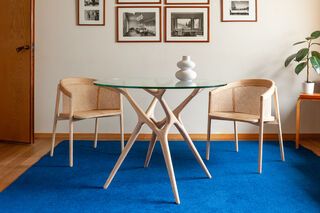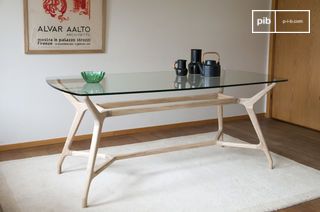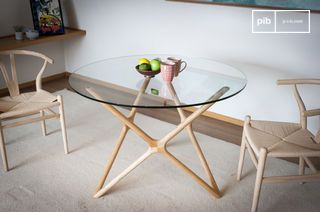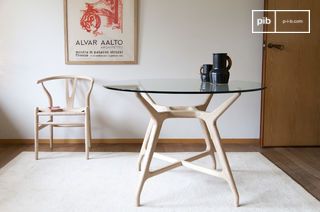Glass dining table
Glass dining tables play on transparency to visually lighten the room. Their tops allow light to circulate, making them ideal for small or already-furnished spaces. Their structure, often in metal or wood, introduces a clear contrast between visual lightness and material stability. Whether round, rectangular or oval, each glass dining table creates a clear focal point in the dining room. This type of furniture combines functionality with controlled visual impact.
read more >Filters
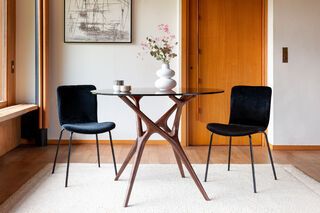
Round glass table with dark solid ash for 4 peopleSylvae
£1025 £920-10%
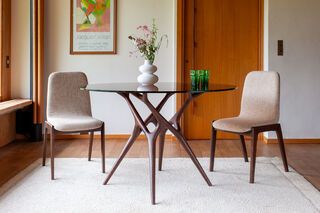
Round glass table with dark solid ash for 6 peopleSylvae
£1195 £1070-10%
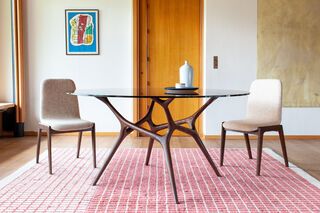
Round glass table with dark solid ash for 8 peopleSylvae
£1560 £1400-10%
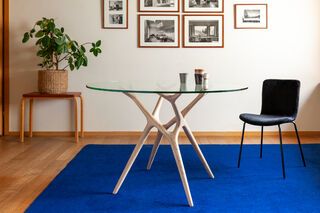
Round glass table with light solid ash for 6 peopleSylvae
£1195 £1070-10%
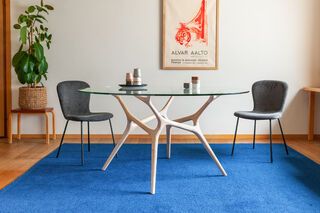
Round glass table with light solid ash for 8 peopleSylvae
£1560 £1400-10%
10 festive days
10% off our tables and consoles
Welcome your guests in style · Limited stock

Why choose a glass dining table?
The glass dining table stands out for its ability to visually lighten space. Unlike solid materials, glass allows light to pass through the tabletop, limiting perceived clutter. This choice is particularly relevant in rooms with reduced dimensions or in interiors already crowded with furniture. Transparency avoids visual breaks and facilitates the table's integration into different decorative styles, without creating aesthetic overload.
On a practical level, the tempered glass used for the tops is designed to withstand everyday shocks. Easy to clean, it retains neither food nor liquid stains. This resistance, combined with a feeling of lightness, makes it a sturdy solution without appearing massive.
Structures and possible layouts
The variety of bases means that the glass dining table can be adapted to very different configurations. A central base facilitates the circulation of guests and clears corners. Conversely, legs at the ends reinforce stability on large formats. Metal, solid wood, painted steel or brass, each structure provides a specific visual anchor, which can be coordinated with the rest of the furniture or used as a contrast. This interplay of materials gives structure to the dining room without weighing down the space.
The available shapes - round for convivial spaces, rectangular for elongated rooms, oval for passageways - offer functional adaptability. The choice depends on the number of users, the frequency of group meals and the seating arrangement around the table.
A functional table in a controlled setting
Opting for a glass dining table is also making a sustainable choice in space management. It combines easily with mismatched chairs, transparent seats or raw wood elements. This compatibility favors freedom of arrangement while ensuring coherence. Glass avoids strong visual dominance, making it a neutral but present support. It can also be combined with materials such as marble, ceramics or leather, without causing any dissonance.
This type of table therefore meets a dual challenge: everyday functionality and aesthetic legibility. Without imposing a single style, it allows for a flexible interpretation of the dining room, adapted to both dining habits and space constraints.
